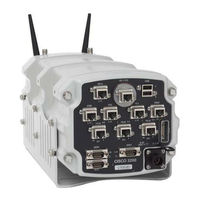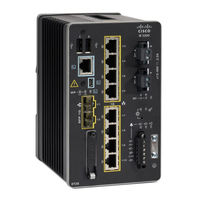User Manuals: Cisco 3200 Series Router
Manuals and User Guides for Cisco 3200 Series Router. We have 6 Cisco 3200 Series Router manuals available for free PDF download: Software Configuration Manual, Use And Care Manual, Hardware Reference Manual, Upgrade Manual, Hardware Upgrade Manual, Datasheet
Cisco 3200 Series Software Configuration Manual (314 pages)
Wireless MIC
Brand: Cisco
|
Category: Wireless Router
|
Size: 5 MB
Table of Contents
Advertisement
Cisco 3200 Series Use And Care Manual (282 pages)
Cisco Systems TelePresence System Installation Guide
Brand: Cisco
|
Category: Conference System
|
Size: 54 MB
Table of Contents
Cisco 3200 Series Hardware Reference Manual (146 pages)
Brand: Cisco
|
Category: Network Router
|
Size: 8 MB
Table of Contents
Advertisement
Cisco 3200 Series Upgrade Manual (60 pages)
Hardware Upgrade Guide
Brand: Cisco
|
Category: Network Router
|
Size: 8 MB
Table of Contents
Cisco 3200 Series Hardware Upgrade Manual (60 pages)
Brand: Cisco
|
Category: Network Router
|
Size: 7 MB
Table of Contents
Cisco 3200 Series Datasheet (13 pages)
Mobile Access Router
Brand: Cisco
|
Category: Network Router
|
Size: 0 MB





